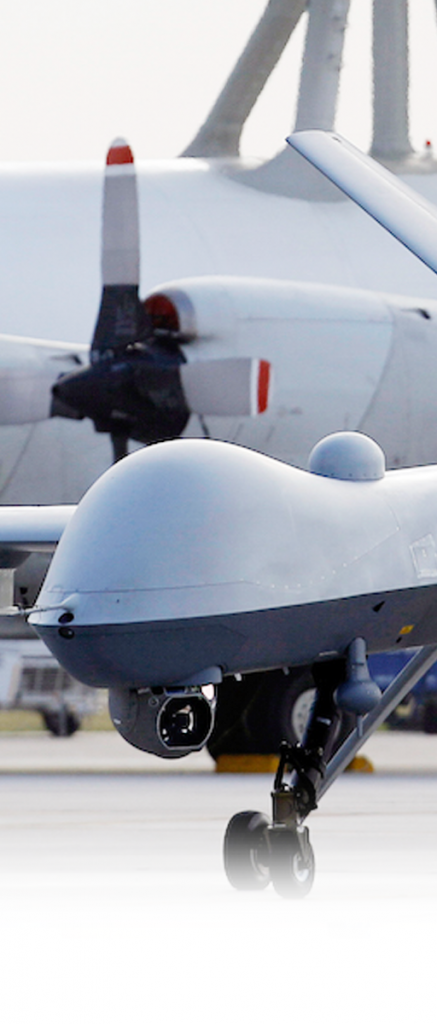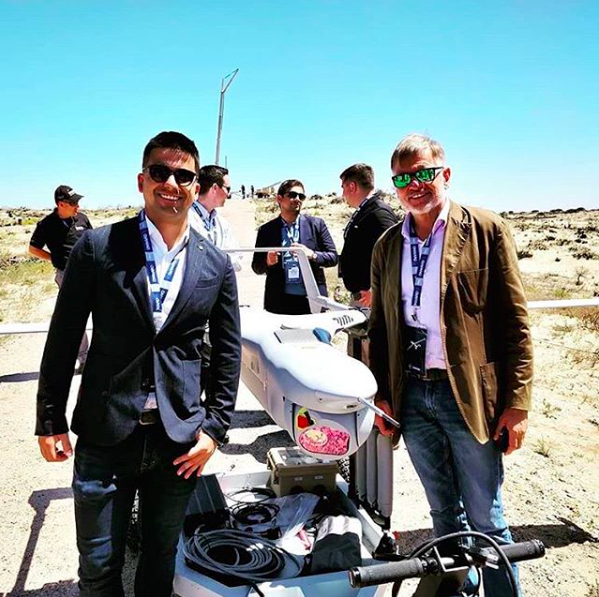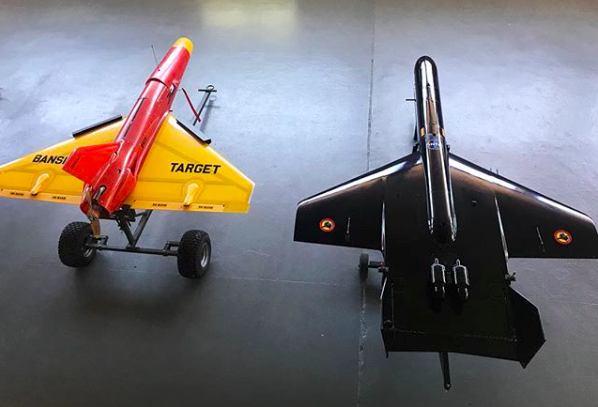
Why pursue a Master in RPAS
The RPAS sector is considered as an emergent market related to multiple services in both civil and military field. This growing industry is having an impact in key areas among civil society, not to mention its systematic use in military developments. We can ensure that is a present-day technology, which future projection is excellent, what motivate us to regularly update the content taught in the Master.
The great opportunity of having available, only a few kilometers from the University of Huelva, ‘El Arenosillo’ Experimentation Center (CEDEA) as an unique european facilities for certification and validation of unmanned aircraft systems and the main space Port of Spain, made it possible to lunch this educational project years ago with the aim of transferring advanced knowledge in RPAS/UAS and linked technologies in the aerospace sector to national and international students.


CEDEA belongs to the National Institute of Aerospace Technology (INTA), attached to the Ministry of Defense. Attending its short and medium term goals, it is expected the development of relevant projects as the implementation of the Center for medium and large-sized Unmanned Systems (Center of Excellence for Unmanned Systems), which aims to be the most advanced center for development of RPAS in Europe (research, development, testing, validation, certification, qualification and value enhancement). Construction will end will conclude by mid-2024. Beside this, CEDEA allows certifications and qualifications of aerial platforms of all types, including manned and unmanned systems. This Experimentation Center will become the main space port of the European Union with the aim of launching rockets for public and private suborbital and orbital systems. There are expected eight annual launches. These scientific-technological activities, beside the official support from INTA, endow the High Performance RPAS Master some unique test range facilities for practical training in a real environment, as well as top expert staff.
You will train your capacities and skills in an environment with a huge potential in several fields as research, innovation, project acquisition and business development, what is a highly valued knowledge to be applied into the different administrations and companies in the aerospace sector.

RPAS/UAS are increasingly covering new application areas, providing services that were unthinkable until now: suborbital satellite systems, long-range radio communication systems, inspecting infrastructures, atmospheric research, topography, risk management and natural catastrophes, fighting fires, environmental control, wild-life research, fish banks detection, monitoring power transmission networks, precision agriculture, security and defense… Without forgetting that are becoming indispensable tools in areas connected with leisure, entertainment, and culture: recognition of historical monuments, filming, sport photography, hunt monitoring… Neither we can forget that RPAS/UAS are boosting the development of complementary technologies that are not necessarily reflective of the aerospace industry but crucial to its development: communications, propulsion, energy. sensor, telemetry… Fuel cells are a concrete example, in which case are allowing to rise significantly the flight range.


For these reasons, students from multidisciplinary profiles can enrol in the Master (civil engineering, agricultural, forestry, mining…), due to the increasing demand from our collaborating companies. As well as the common ones (aerospace, telecommunications, computing, electronics, mechanics, physics, mathematics…) and professionals geared to application services or interested in the field of business development.
Frequently Asked Questions
The recommended profile for admission to the Master’s degree is to be in possession of a university degree in engineering, science or equivalent. However, the Academic Committee of the Master may consider other academic qualifications required for admission, prior student curriculum analysis.
For those students who have finished their undergraduate studies but does not have the diploma in engineering degree, bachelor of science or equivalent, the Academic Committee of the Master may authorize the student’s enrolment. Nevertheless, once they pass the Master may not apply for the diploma until they provide the official documentation certifying income qualifications.
Most of the Master’s degree is taught at the CEUS (INTA) facilities in the municipality of Moguer and at the Higher Technical School of the University of Huelva
The Master has a duration of 450 hours spread over approximately 9 months (from October to June of the following year). The course, which includes academic and practical activities at the University of Huelva and at the National Institute for Aerospace Technology (INTA), begins at the beginning of October and ends at the end of June of the following year. During the whole course, students will carry out the Master’s Final Project.
- Design and building of civil and military RPAS.
- Propulsion, power and energy sources.
- Control, navigation and simulation systems.
- Avionics, communications and networks.
- Civil and military Payloads.
- Operations and maintenance of civil and military RPAS.
- Regulations, qualification and certification of RPAS.
- Business development and entrepreneurship.
The Master includes a personalized guidance to help you find your professional goals in the aerospace sector.
The Master has a cost of 6.000€, which can be paid in 2 instalments.
A maximum of 30 students are admitted to each edition of the Master in order to guarantee the quality of training and the individualised monitoring of each student.
Upon pre-registration, the student must submit the documentation regarding his / her university education and curriculum vitae. Once it is analysed by the Academic Committee of the Master, the student has order of preference to carry out the enrolment. The student is continually updated about the process.
The academic and practical activities at the University of Huelva and at the National Institute for Aerospace Technology (INTA) begin at the beginning of October and finish at the end of June of the following year. During the whole course, students will carry out the Master’s Final Project.
- Have a basic knowledge of atmosphere and meteorology.
- Acquire knowledge of meteorology applied to aviation.
- Be familiar with sources of information showing predictions of the behavior of the atmospheric environment, as well as the interpretation of the same.
- Understand how an aircraft flies and how to interpret it.
- To understand how a UAS flies, in all phases of flight.
- Analyze the performance of the UAS.
- Understand how a UAS is controlled.
- Understand the control techniques and systems applicable to UAS.
- Analyze the stability of the UAS.
- Understand how the UAS responds to the actuation of control surfaces.
- Analyze flight trajectories.
- Analyze flight operations.
- Understand the fundamentals of rotary wing UAS flight.
- Understand the fundamentals of propulsive power generation in aircraft.
- Understand the air navigation system.
- Understand how the various navigation systems work.
- Perform route planning.
- To know the basic fundamentals of the electrical and electronic systems on board a UAS.
- To understand the classification, typology, applications, industry and market of UAS.
- To understand the fundamentals of batteries and supercapacitors.
- To know the particularities of power plants for UAS.
- To understand the rules and regulations for the integration of UAS in airspace.
- To know the systems for the integration of UAS in airspace.
- Understand the regulations and processes for UAS qualification and certification.
- Understand the fundamentals of UAS design and manufacturing processes.
- Understand UAS maintenance techniques and processes.
- Understand advanced UAS applications.
- To understand the instrumentation and data fusion techniques applicable to UAS.
- To be familiar with modelling and simulation techniques applicable to UAS.
- Knowledge of communication and network systems and their regulations.
- Know and know how to on-board payloads applicable to UAS.
- Have an overview of on-board perception systems in UAS, as well as artificial vision techniques for them of artificial vision techniques for their maximum exploitation.
- Have an overview of the scientific, technological and commercial scope of UAS.
- Have an overview of the employment opportunities in the UAS field.
- Have an overview of the prospects for the development of UAS technologies and market.
- Have an overview of the development prospects of UAS technologies and the UAS market.
- To know and perform technical inspections with UAS.
Ask for information
"*" indicates required fields
Basic information about Data Protection: Your data will be stored in different sufficiently protected files, for which the University of Huelva is responsible. The purpose with which your data is collected is the management of the different requests for contact or registration in our courses, being legitimized by your consent given to provide your data and for the execution of the contract in case of subscription of services, without your data being transferred to any third party except legal obligation, although your data will be processed by third parties such as the Hosting server and email, which will be Webempresa and Google Analytics to improve the web experience. You can exercise your rights of access, rectification or deletion, limitation and opposition to treatment. For more detailed information you can access our Data Protection Policy.
